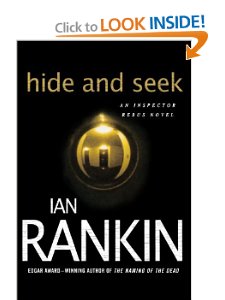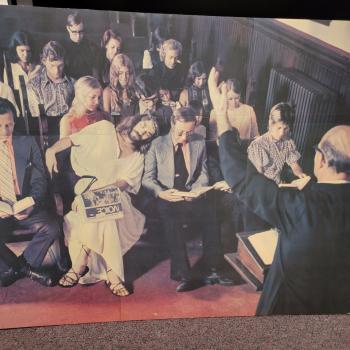It’s always a risk to attempt to ‘sample’ previous fictional literature and use one or more of it’s premises to write a new story. The danger of course is comparison—to the detriment of the later writer’s work, especially if he is ‘sampling’ a classic like Robert Louis Stevenson’s ‘Dr. Jekyll and Mr. Hyde’. But Ian Rankin is from Edinburgh, and he loves the literary past of the city, and in this case, the sampling is not botched or obsequious or a mistake. I would liken it to what the TV show Elementary has done with the legacy of another Edinburgh writer— A.C. Doyle.
This is the second novel in a series that now has run to 18-19 volumes, and so it is early days for Inspector John Rebus and his work in Edinburgh. This particular novel introduces us to the sidekick— Brian Holmes, who proves to be a good Watson to Rebus’ Holmes, to borrow and Edinburgh metaphor. If you have not had occasion to hear the story of Deacon Brodie who provided the original factual fodder for Stevenson’s original story, you should look him up. This story is not about him, but it is a story about revealing the seamy underbelly of crime and addiction and gambling and evil in general in Edinburgh. It’s rather like pulling up the mat on your front door stoop, and seeing the cockroaches. All along people had been admiring the new doormat, but not bothering to look underneath. Well, Inspector Rebus is hard wired to look underneath. He’s a relentless blood hound who is out for blood, and will not be deterred, even if someone is trying to make sure he’s interred. Here’s a plot summary from the source…
“At night the summer sky stays light over Edinburgh. But in a shadowy, crumbling housing development, a junkie lies dead of an overdose, his bruised body surrounded by signs of Satanic worship. John Rebus could call the death and accident–but won’t. Instead, he tracks down a violent-tempered young woman who knew the dead boy and heard him cry out his terrifyng last words: “Hide! Hide!” Now, with the help of a bright, conflicted young detective, Rebus is following the girl through a brutal world of bad deals, bad dope and bad company. From a beautiful city’s darkest side to the private sanctums of the upper crust, Rebus is seeking the perfect hiding place for a killer, in Hide and Seek, the second novel in the series from Ian Rankin.”
These novels are atmospheric… and you can see the descriptive power of the author beginning to increase and develop. And he keeps bringing Christianity, specifically Scottish Presbyterianism into the picture. Take for example the following… the villain leaves a suicide note saying
“I am the chief of sinners, but I am also the chief of sufferers”
Or consider this description of Rebus on p. 82— “bu Satanism found his mind well and truly closed. He was a Christian, after all. He might not attend church often, detested all the hymn singing and the bald sermonising, but that didn’t mean he didn’t believe in that small dark personal God of his. Everyone had a God tagging along with them. And the Scots was as ominous as he came.” So indeed, these novels are not just about good and evil but a particular sort of vision of good and evil, and the Calvinist vision of God comes in for some heavy weather along the way. What kind of God justifies sinners, asks Rebus, but leaves them sinners? Why are there people who are solid citizens by day, and demons by night?
This novel takes place over the space of basically a single week.. and the chapters are all named after a day of the week. Each chapter also begins with a quote from the Stevenson original. This is effective up to a point, but it seems contrived at points as well. I liked this second installment in the series, but the third one, already reviewed here is a corker. Go for it first, if you’re looking for a mystery thrill ride.


















